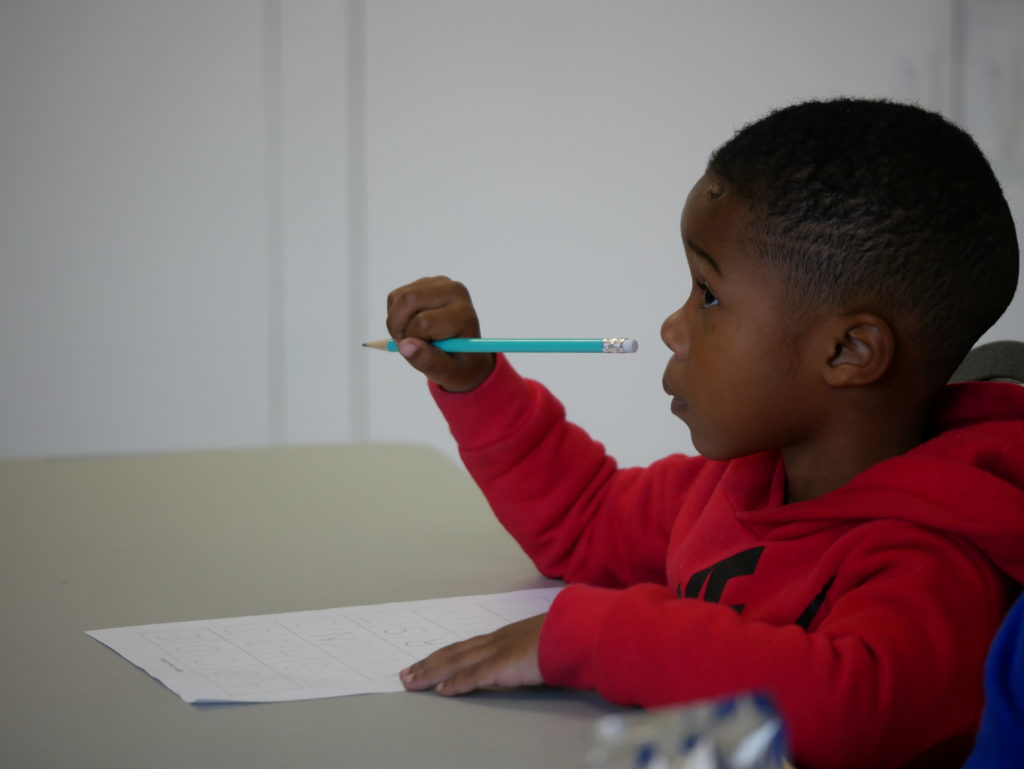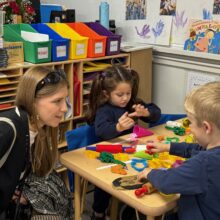'That child, family, and provider experience'
Early Bird readers, hello again. Newcomers, welcome! If you were forwarded this email, you can sign up here to receive it every two weeks, and join our conversation on issues facing North Carolina’s young children and those who support them. If you’re already a subscriber, please help us reach more people by sharing this with your friends and co-workers interested in early childhood education.

As 2021 comes to an end, there is much to reflect upon — and learn from — in the world of early care and education, here in North Carolina and beyond.
In North Carolina
Pandemic challenges continued to shape realities for children, families, educators, and administrators, while programs and communities figured out how to serve children safely. North Carolina’s child care, pre-K, and early elementary classrooms adjusted to students’ needs after interruptions in learning and social and emotional development. Teachers in pre-K to second grade started training in the science of reading as the state passed and began to implement a law to improve reading instruction.
Many early childhood educators left the field for better pay and less stressful environments, leading to classroom closures. Advocates pushed for increased compensation and investments to help more children get access to high-quality learning. The state continued distributing federal relief funds, including the first round of stabilization grants this fall that reached 3,919 child care facilities.
In Washington
The U.S. House passed a piece of legislation called Build Back Better in November, which would infuse the child care landscape with unprecedented public dollars, ensuring lower costs for families and higher wages for teachers. It would also establish universal pre-K for 3- and 4-year-olds over the next six years, building on states’ existing programs.
The Senate has not yet voted on the bill. If it does pass and is signed by President Biden, states would have to opt in and provide matching funds. There are also ways for localities to receive funds in states that do not opt in.
Go here for a Q&A-style guide to the early childhood components of the latest version of the legislation from The Hunt Institute.
States to watch
States across the country are dealing with similar challenges and opportunities while they wait to see how federal decisions play out. Some are preparing by passing their own child care and preschool reforms and rethinking their early childhood governance structures. Let’s take a look at some bright spots and trends in state early childhood policy this year from an “Early Efforts” webinar from The Hunt Institute:
- In Washington, the most comprehensive child care legislation in the country.
- Through the Fair Start For Kids Act, the state increased the eligibility threshold so more parents were eligible to receive child care subsidies and decreased the cost of copayments.
- The law increases the amount providers receive to serve children through subsidy, with a specific investment in infant care (the most expensive and least accessible).
- The law will cover health care premiums for early childhood educators and give extra pay to teachers with trauma-informed training and bilingual teachers.
- The law expands home visiting and informal early learning play groups for children not in a formal setting.
- In South Carolina, pre-K siblings are covered.
- The state created a scholarship program for siblings of 4-year-olds in the state’s First Steps 4K pre-K program. Through a partnership with the state’s department of social services, siblings can receive care through the subsidy program. Twenty-six percent of families enrolled in the program.
- In Alabama, pre-K wins.
- The state legislature passed more than $24 million to expand its First Class Pre-K program, known as one of the highest-quality preschool programs in the country. The state reaches 42% of 4-year-olds and hopes to provide universal access by 2026.
- Barbara Cooper, secretary of the state’s department of early childhood education, mentioned two large next steps: strengthening the program’s mixed delivery model by working with community-based child care and supporting the educator workforce. “Just because we receive additional funds, doesn’t mean we’d be able to open x amount of classrooms overnight without having that workforce in place,” Cooper said.
- In Colorado and North Dakota, early childhood governance switch-ups.
- Colorado created an early childhood cabinet agency to streamline bifurcated early childhood policies and programs.
- North Dakota consolidated its early childhood programs into one division.
- Leaders from both states talked about placing the family experience at the center of all other decisions.
- “Many states — should Build Back Better pass — need to really kind of wrestle with this conversation around that child, family, and provider experience,” said Bill Jaeger, vice president of early childhood and policy initiatives with Colorado Children’s Campaign.
In the new year, I’ll be keeping you up to date as the state and national early childhood landscape evolves and, of course, looking for local stories too. As always, feel free to respond to this email with story ideas and questions, or simply to connect. I’ll be back in your inbox — and your classroom — in 2022. Happy holidays!
Early Bird reads: What we’re writing
At long last, a budget. What does it mean for K-12 and early childhood education?
The budget appropriates almost $243 million in each of the next two fiscal years to the Division of Child Development and Early Education, which falls under the Department of Health and Human Services (DHHS).
The budget slightly increases the rate NC Pre-K private providers receive to serve 4-year-olds, gives additional funds to Smart Start, allocates start-up funds for new early childhood programs in low-wealth areas, and uses federal relief funds to help more families afford child care.
Your take, for goodness sake: EdNC perspectives
Perspective | The Build Back Better Act, state budget, and Leandro: Opportunities for young children in 2022
The North Carolina Early Childhood Foundation’s Mary Mathew provides an overview of “three major developments that have the potential to impact the future of North Carolina’s children, residents, and economy in unprecedented ways…”
Mathew breaks down the state budget, the Leandro remedial plan, and the Build Back Better framework in easy-to-digest charts that include resources to dive deeper and take action.
In other early learning news: What I’m reading
A big reason for the labor shortage is hiding in plain sight — daycares are losing workers - From Business Insider
This company invests $2.5 million a year in childcare - From Fast Company
Three things to know about Colorado’s plan for universal preschool - From Chalkbeat
The Pandemic Accelerates a Decline in Campus-Based Child Care - From The Chronicle of Higher Education
Research & Resources: Let's talk strengths-based care
A new brief from Child Trends and the Equity Research Action Coalition from the FPG Institute highlights the cultural strengths and assets of Black families, with an aim to inform individuals’ approaches working with Black infants and toddlers.
Splitting it into three domains — good health, strong families, and positive early learning experiences — the authors provide historical and cultural context, then examples of how a strengths-based approach can be used in early care and education settings. They use a theory called “Yosso’s Cultural Wealth Model” to underscore the assets of Black families’ traditions and interactions.
“Yosso posits that the experience of being from a ‘socially marginalized’ group in the United States results in the development of particular assets and strengths—referred to as ‘community cultural wealth’—that often go unrecognized. This capital comes in six forms—aspirational, navigational, social, linguistic, familial, and resistant…”
For example, the authors highlight that Black parents are more likely to sing and tell stories to their babies every day than read with them — an interaction that is often not as valued in formal educational settings yet is transmitting multiple forms of “capital” seen above.
“Practitioners should recognize the potential significance and importance of various types of communication that Black families use and how these communication styles may be accessed to transmit protective cultural awareness, values, and norms.”
![]() Sign up for Early Bird, our newsletter on all things early childhood.
Sign up for Early Bird, our newsletter on all things early childhood.

